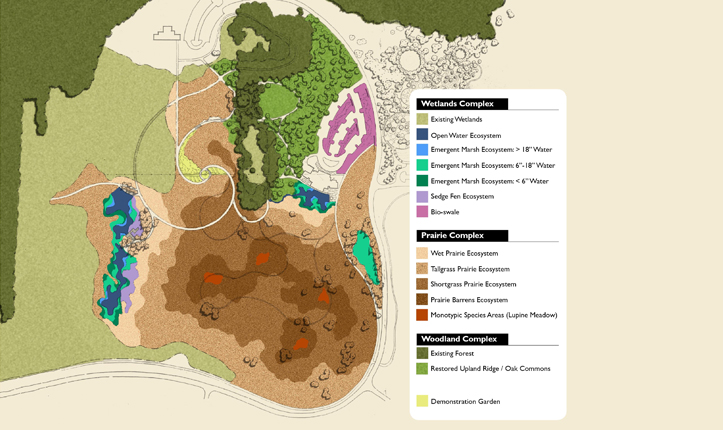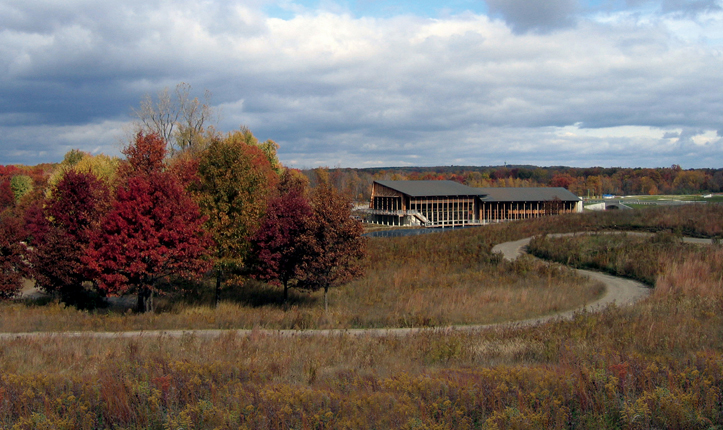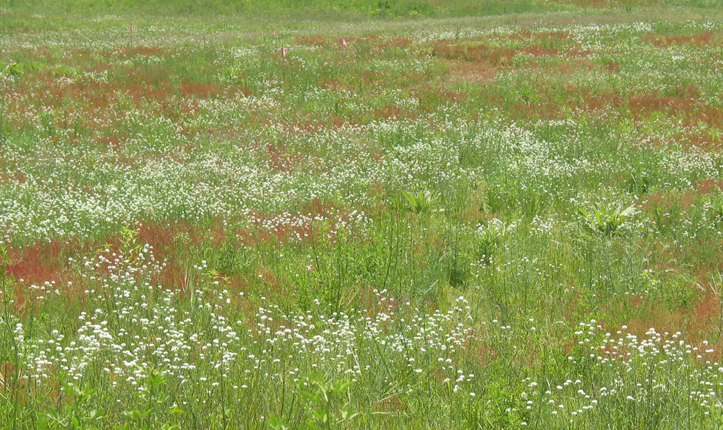A great post on the The Dirt from a couple of months back delves into a topic near and dear to my thoughts on landscape architecture and urbanism – particularly how do we blend science and design in meaningful ways. The article “Teaching Ecological Restoration (Not Restoration Ecology) includes the new Temple University concentration in ecological restoration as part of their dialogue, namely that there must be application ‘on-the-ground’ of ecological principles. As noted by Temple faculty John Munro, he’s concerned that the Society for Ecological Restoration “…is moving away from its focus on practical, on-the-ground, ecological restoration projects in favor of more passive, “academic research on restoration ecology.” and that, “many restoration ecologists can no longer “see the forest for the statistics.””.
The issue of relevant knowledge for practitioners is valid, as a typical undergraduate program is going to focus on the fundamental items that a student needs to gain a thorough and holistic understanding of the profession. Further refinement and advancement (specialization) happens through on-the-job experience and continuing education, as well as more formally through masters and PhD studies, where advanced research methods, both quantitative and qualitative are added to the toolkit. There is a limit in practical terms, as the education and specialist knowledge takes away from one’s general knowledge base, and is the preferred role of landscape architecture to be the experts or the synthesizers of information?
The article quotes Emily McCoy from Andropogon, stating that: “landscape architects are finally beginning to take seriously the idea of measuring ecosystem function.” They are also beginning to “take the best scientific information and apply them to landscape design.” This is challenging because landscape architects are not trained in statistics so can’t truly understand landscape function. This means they need to work with restoration ecologists or environmental designers.”
Although i might take issue at the lack of statistics education equating to “can’t truly understand landscape function.” I get the intent, and this reference to statistics is a good one. Many (most?) types of research rely on some sort of applied research methods, particularly sciences. Statistics is often used, but very few landscape architects have this level of knowledge. We may begin to integrate these methods in LA education, but it will still be a far cry from the amount of work (just in general hours of class time and training) required to perform and understand, as advanced level statistics is not for the faint of heart.
Do we want that knowledge, or do we, as mentioned, look to work more with the appropriate scientists, in order to provide the right mix of art and science required for complex contemporary work. If we need that level of expertise, where does the trade-off come in other things we are taught? Probably a question for the CELA members, but I guess in the end, it comes down to the questions we are asking in our design processes those we lack answers for. As McCoy mentions, they at Andropogon seek additional knowledge from experts for:
“…soils and soil biology (here, they are interested in “how what’s under the ground affects what’s above the ground”); habitat (“how do we define this?”); native plants (“can they succeed on green roofs?”); climate change; urban heat islands; assisted migration; and plant provenance and ecotypes.”
As a graduate of a State school with a very specific and finely honed technical basis, I had a concentration) in Natural Resource management (this was North Dakota State University where i graduated in 1997). While it wasn’t as refined in terms of how the information related specifically back to design, and in modern terms wasn’t ecological restoration, it was a preliminary ‘ecological’ education that immersed us in systems, soils, plant ecology, biology, and other natural sciences. And it was hard for non-scientists to jump in, as these classes were taught by science professionals, and they didn’t dumb down the content for us designers because they were teaching future scientists. It was up to us to keep up, and many failed miserably. I also had one introductory statistics class in undergraduate education, which was a good overview of how statistical methods work, what methods are out there, and what problems they can be applied to. Did it make me able to perform complex statistical models? No way, but it did give me general understanding of what is possible.
Later, in my doctoral studies in Urban Studies we learned in much greater detail a number of research methods and tools, with quantitative and qualitative requirements, including statistics, part of the basic core knowledge. It was assumed that we were all going to be researchers and scientists, and thus a fundamental skill to have to conduct and interpret research. I gravitated, like many designers I imagine, to GIS based spatial statistics as preferred methodology, because they are both easily applicable at various scales (from the site to urban region), and more easily grasped. That said, there are a number of social- or biological-science specific methods that would be applicable to landscape architecture and ecological design that may not be spatially based.
One side of the equation is designers understanding the tools and methods (or applying these) relevant to the sciences. In this case, the other side of the coin is the innate question of legibility and communication (or dare I say relevance) from scientists working on research and how this applies to research. Ideas need to be able to inform practice, and be accessible to new audiences beyond the academic cycles. This means certain types of research that stems from actual design questions, monitoring of projects through post-occupancy evaluation, etc. One benefit of these higher level collaborations is the blending of creative communication and graphic knowledge with the sciences – which makes ideas and concepts more accessible to designers and clients. Another is perhaps more access to the research (both intellectually and in terms of $$$) as it is often difficult and costly to be up on the latest trends and issues if you are not in academia.
As Patricia Kemper mentions, surveys of master’s level LA program students shows that “while landscape students are getting exposed to the concepts of ecological restoration, they are not typically being taught nuts and bolts of ecological restoration practice.” What those nuts and bolts are is fundamental to an educated and relevant set of future professionals? Err to the side of broad education w/ exposure to a wide array of subjects and we are marginalized for lack of technical specialist knowledge. Err on the side of ecological specialization and we becomes very skilled at a few things, but suffer from lack of relevance to wider issues.
A dilemma for us all as we grapple with what to learn and to what degree, particularly in professions such as landscape architecture and urbanism that require on many levels a broad foundation of knowledge. What you were required to know as a professional has changed much since i started school over 20 years ago, and will continue to do so. The conversations of art versus science has quieted somewhat and there is now shared concept that both are important. We’re still figuring out the integration (consilience) but that will continue to evolve. Does the pendulum swing too far back towards science and causes us to lose the fundamental unique perspective we bring to projects? I hope not, as we definitely need additional knowledge to stay relevant, but we also do best as unifiers and synthesizers, big-picture thinkers, problem solvers, and visionaries.




Dear authors of the project,
Read with interest your section, and information about James Clarkson Environmental Discovery Center.
Today, I and my colleagues are working on a project Elysium issues that you raise: restoration ecology in urban environments, aesthetics, beauty and benefits for citizens.
We are public (non-commerceal) organization.
And the our target is “creative act in urban of the XXI century”.
Your work,and the results (synthesis of science and art), style,
give me both hope and a landmark “am i right, on my way.?!”
))
Project Manager Rudolf A. Fedenko
Regards